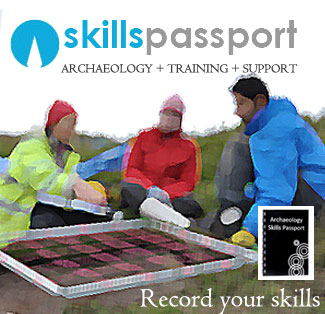Create a digital dataset and help produce a geo-referenced plan with various shp files layers and metadata. The object is to create a digital dataset that is easily accessible and transferable between specialists and disciplines. The Primary record still remains the paper record (though more digital data is being collected than ever) however this is a clean digital version of this unaltered primary source.
Managing large and complex data sets is a challenges of archiving and online delivery which must be considered prior to collation.
Digital material can be extremely fragile and ephemeral. With the volume of information that exists in digital form increasing rapidly, there is a growing awareness of the importance of digital preservation and effective data management. In particular archaeological information in digital form is often the only record of archaeological work which cannot subsequently be repeated, and therefore of particular importance in the development of the archaeological record. Access to digital data is also extremely important. If data is not accessible or findable it cannot be reused to contribute to future research. As a result digital accessibility and preservation is now a major concern for all institutions that deal with data. Research Councils are increasingly demanding that digital data be archived in a suitable repository and policy frameworks require that archaeological organizations and practitioners must institute good practices to ensure the long-term preservation of and access to digital data.
PRINCIPLE: Take digital/non digital data and process into a usable format. Prepare for use and input into a database and/or GIS system.
- Novice – Is able to prepare data consistent with the requirements of the system.
- Competent – Able to prepare data consistent with the requirements of the system and flag possible issues, errors and integrate with GIS
- Proficient – Will prepare all data and flag possible errors or inconsistent cross referencing and then collate these issues in order to rectify them. Integrate data onto a GIS system or similar data management system such as IADB.
Professional tips:
Integrated Archaeological Database system, or IADB for short, is an open source web based application designed to address the data management requirements throughout the lifespan of archaeological excavation projects, from initial excavation recording, through post-excavation analysis and research to eventual dissemination and archiving.
Although the industry standard is ARCgis, do not forget that you can practice on opensource systems such as QGIS and Open Office databases. The principals are the same, and if you can link datasets and interrogate spatial data then you will have no difficulty in translating this to commercial packages. Familiarity breeds ability.
At this level you are expected to understadn the procedures and concepts, such as interoperable systems and meta data – don’t be scared of organisation.
QGIS is a free, open source GIS application for Windows and Mac that provides a great starting point for archaeologists who want to learn to explore data with maps.
Understanding how to visualize map data is an important skill but it can be intimidating. This tutorial will guide you through the basics, covering how GIS files work, how to edit them and how to join them with external data for analysis. It will also give you the tools to make simple, interactive data maps that work on every platform. http://multimedia.journalism.berkeley.edu/tutorials/qgis-basics-journalists/
OS OpenData – a source of free maps, contours and height data for use in GIS.
Open Office ( Free software that includes databases and spreadsheets)


